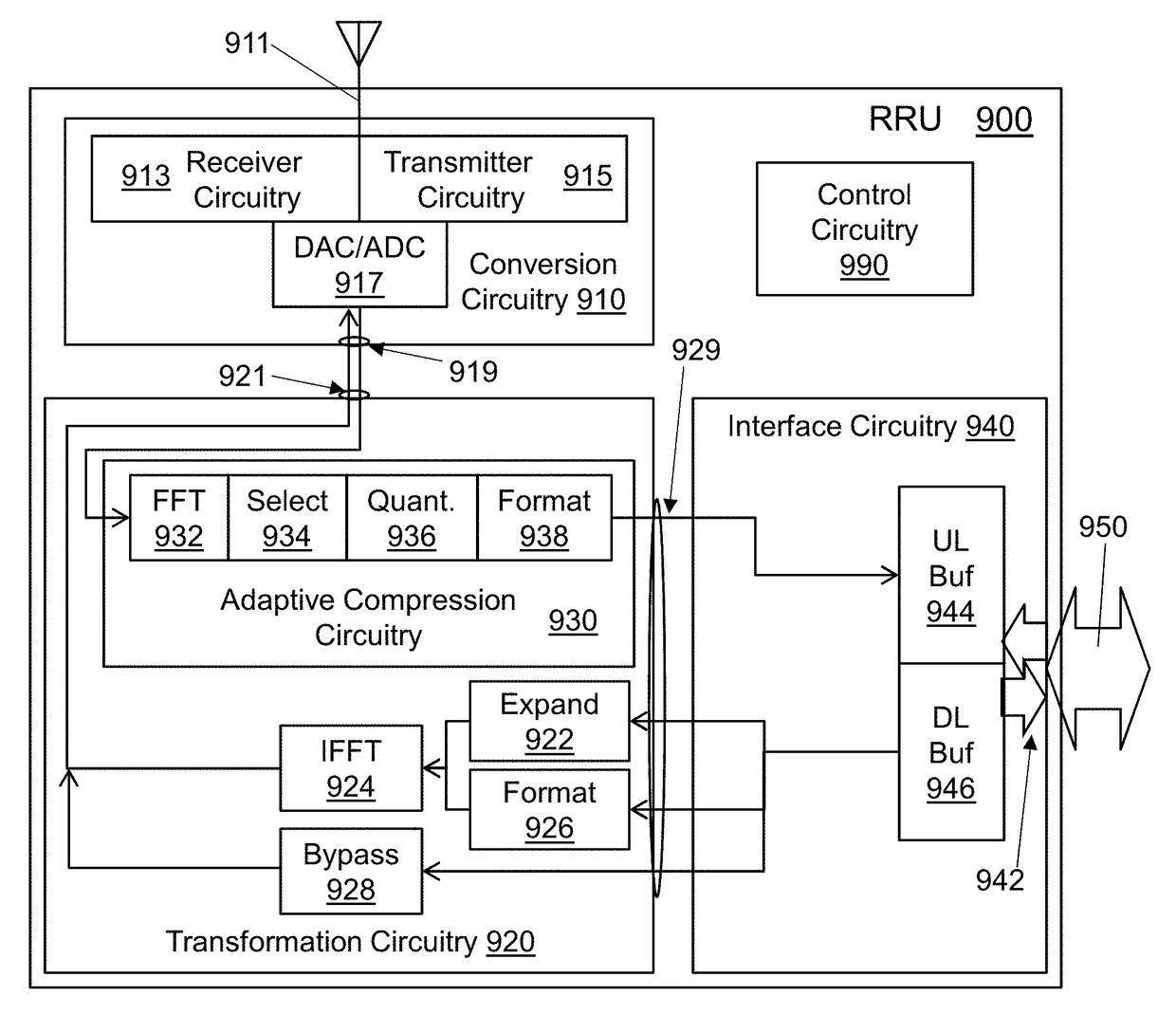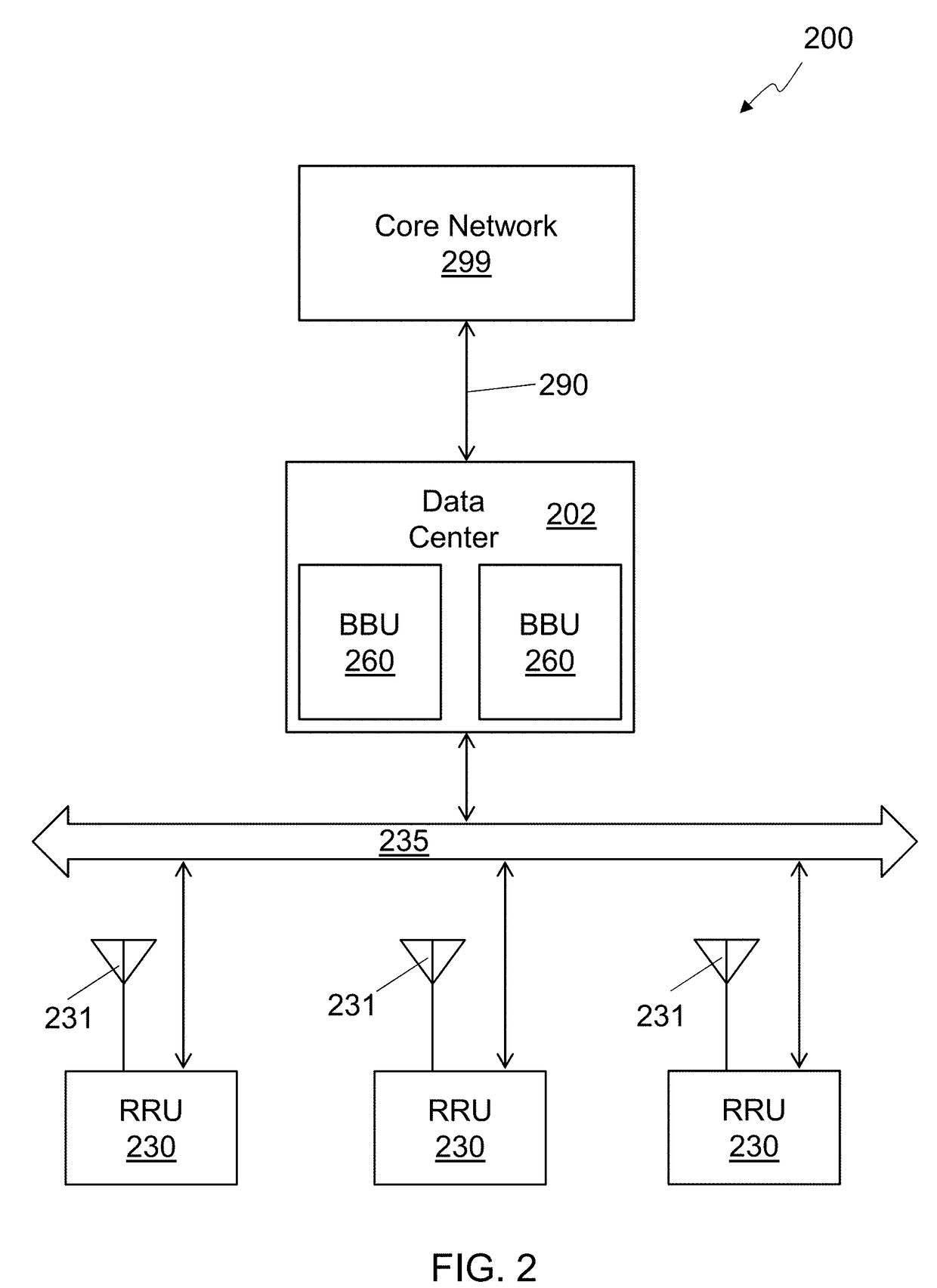Remote Radio Unit with Adaptive Fronthaul Link for a Distributed Radio Access Network
a radio access network and remote radio technology, applied in the field of wireless communication, can solve the problems of system failure, latency of/b> architecture, and inability to sustain communication between an enb and a u
- Summary
- Abstract
- Description
- Claims
- Application Information
AI Technical Summary
Benefits of technology
Problems solved by technology
Method used
Image
Examples
first embodiment
[0337]In a first embodiment, a GPS signal is used by the RRU for synchronization. This may be accomplished by providing the RRU with a GPS receiver, from which GPS-grade atomic-clock level accuracy can be extracted.
second embodiment
[0338]FIG. 24 is a diagram showing carrier synchronization based on a downlink signal 2415, which is a RAN system 2400. In the second implementation, a downlink (DL) signal 2415 transmitted by at least one nearby eNB 2410 is used for synchronization. The signal 2415 may be at least one of a primary synchronization sequence (PSS), secondary synchronization sequence (SSS), physical broadcast channel (PBCH), cell-specific reference signal (CRS), or a combination thereof. The at least one signal may be received by the RRU 2430 via a dedicated RF receiver chain 2432, or by periodically retuning the existing receiver chain to the frequency used for transmission by the at least one nearby eNB 2410. In the latter case, the RRU 2430 may not be able to receive regular uplink signals while the receiver chain is used to receive the signal for the sake of synchronization. Uplink configuration and scheduling may be tuned so as to minimize the performance degradation stemming from skipping recepti...
third embodiment
[0339]FIG. 25 is a diagram showing carrier synchronization based on an uplink signal 2515, which is a RAN system 2500. An uplink signal 2515 transmitted by at least one nearby UE 2570 is used for synchronization. The nearby UE 2570 may be a dedicated beacon unit. The beacon unit 2570 may be located in an area with good GPS reception and with good propagation conditions from / to multiple RRUs 2530. The beacon unit 2570 may have a GPS-synchronized UE circuitry 2572 and baseband UE processing, possibly simplified (that is, lacking some features to reduce costs). The beacon unit 2570 may periodically attempt random access on the uplink frequency used by nearby RRUs 2530 for UL reception. Periodic random access attempts may sequentially target a different RRU 2530, that is, the UE embedded in the beacon unit 2570 may sequentially camp on each detectable RRU 2530 and perform at least one random access for each RRU 2530 after camping. The plurality of detected RRUs 2530 may be explored in a...
PUM
 Login to View More
Login to View More Abstract
Description
Claims
Application Information
 Login to View More
Login to View More - R&D
- Intellectual Property
- Life Sciences
- Materials
- Tech Scout
- Unparalleled Data Quality
- Higher Quality Content
- 60% Fewer Hallucinations
Browse by: Latest US Patents, China's latest patents, Technical Efficacy Thesaurus, Application Domain, Technology Topic, Popular Technical Reports.
© 2025 PatSnap. All rights reserved.Legal|Privacy policy|Modern Slavery Act Transparency Statement|Sitemap|About US| Contact US: help@patsnap.com



